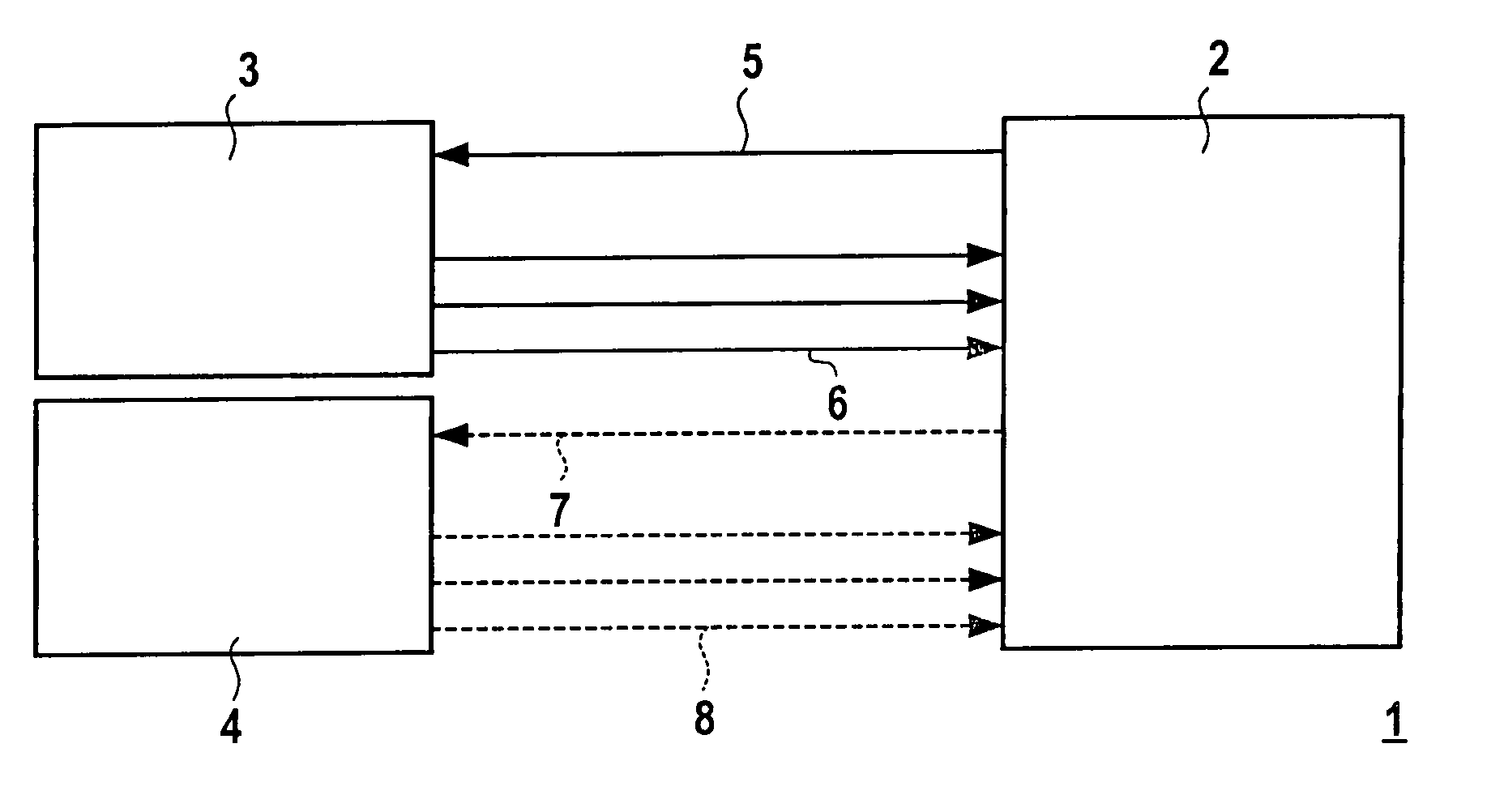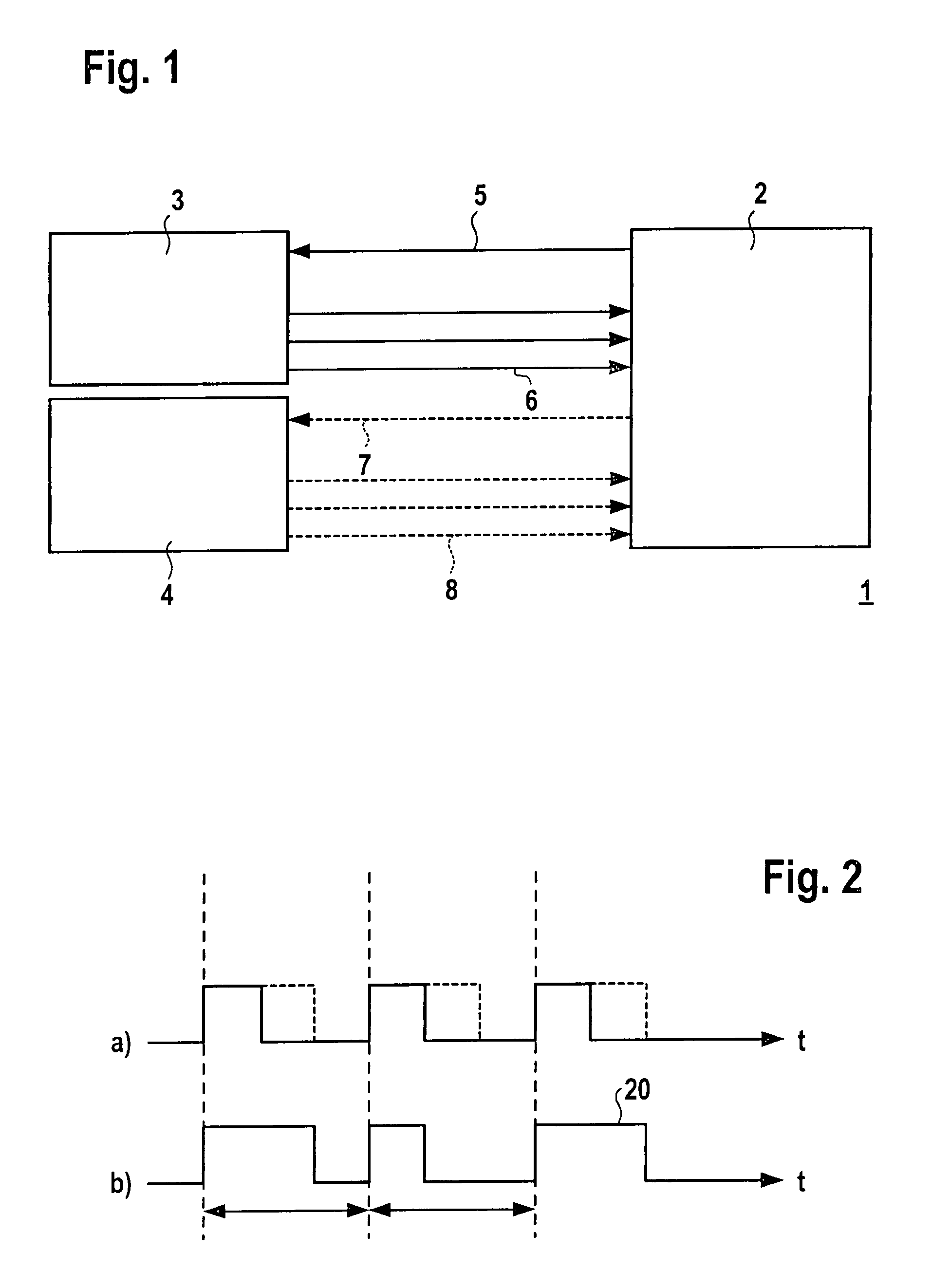Image recording system with improved clock signal transmission
a clock signal and recording system technology, applied in closed circuit television systems, color television details, television systems, etc., can solve the problems of not receiving direct clock pulse information, image-recording system is more expensive, etc., to achieve accurate synchronization of data connection, high bandwidth, and low cost of bidirectional communication.
- Summary
- Abstract
- Description
- Claims
- Application Information
AI Technical Summary
Benefits of technology
Problems solved by technology
Method used
Image
Examples
Embodiment Construction
[0006]FIG. 1 shows the block diagram of an image-recording system 1. Image-recording system 1 includes at least one camera 3 and one receiving device 2. The at least one camera 3 and the receiving device 2 are connected to each other via signal connections 5, 6. In this context, signal connection 5 is a so-called “uplink” connection, that is, it makes possible a signal transmission from receiving device 2 to camera 3. In this context, signal connection 6 is a so-called “downlink” connection, that is, it makes possible a signal transmission from camera 3 to receiving device 2. The method of functioning of the image-recording system will now be described below. Receiving device 2 steadily transmits a sequence of PWM-coded (PWM=pulse-width-modulated) digital signals via signal connection 5, which, according to the illustration in FIG. 2a are made up of logical zeros or logical ones. In the illustration in FIG. 2a, a continuous line represents a logical zero, while the dotted line means...
PUM
 Login to View More
Login to View More Abstract
Description
Claims
Application Information
 Login to View More
Login to View More - R&D
- Intellectual Property
- Life Sciences
- Materials
- Tech Scout
- Unparalleled Data Quality
- Higher Quality Content
- 60% Fewer Hallucinations
Browse by: Latest US Patents, China's latest patents, Technical Efficacy Thesaurus, Application Domain, Technology Topic, Popular Technical Reports.
© 2025 PatSnap. All rights reserved.Legal|Privacy policy|Modern Slavery Act Transparency Statement|Sitemap|About US| Contact US: help@patsnap.com


